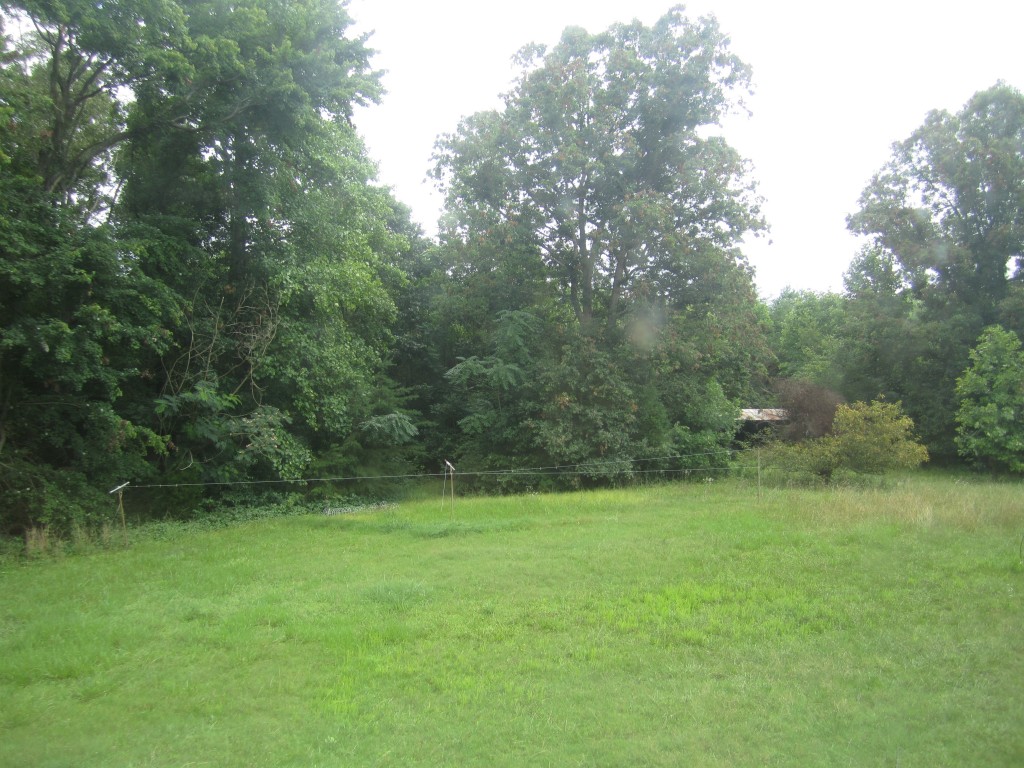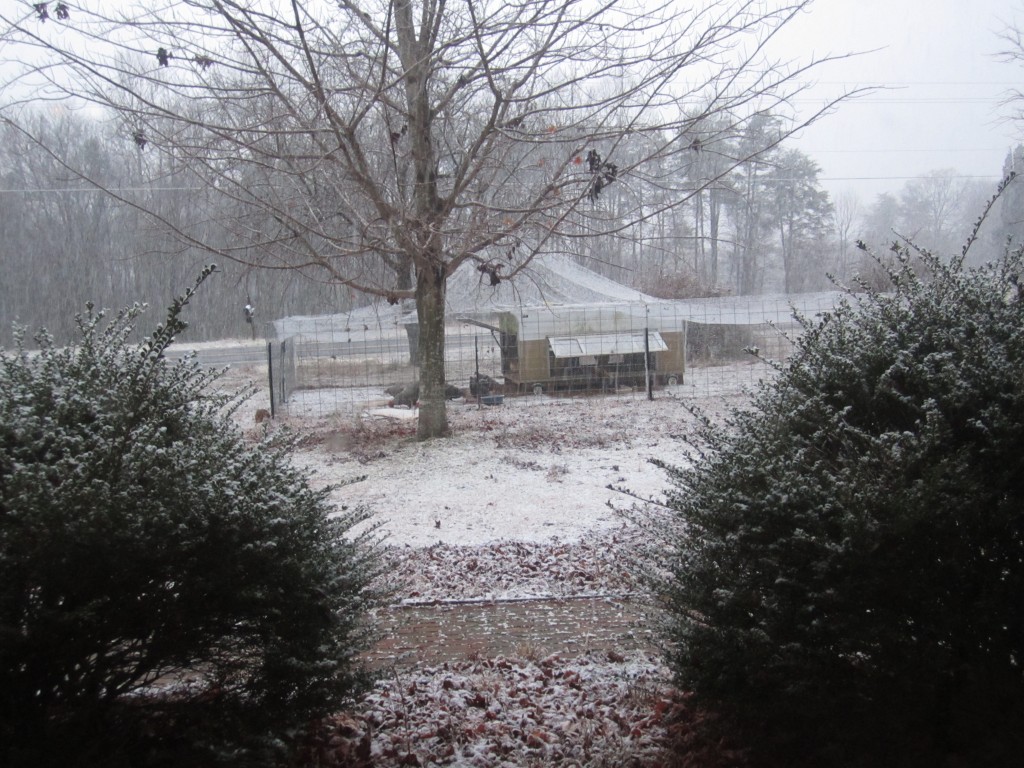Let it snow!
We got our second snow of the winter, and it stuck. It stuck to the chickens, the bird netting, and basically everywhere on the homestead other than the driveway. It looks great to me (as I’m sure Sean Law’s messy lawn looked great to him), but we’ll see about travel conditions tomorrow.
Today we pretty much lazed about, waiting on the snow to start. Emma whipped up some sweet potato ginger soup (Yum.) and I mulled over some seed catalogs that recently came in the mail.
I focused on perennial plants today, and the lists and descriptions of exotic edibles and unusual varieties guided my thoughts to our backyard, and our plans for next year.
I’d like to put in a food forest.
A food forest is basically what it sounds like, a forest of food, and can take many shapes and sizes. Cultures all over the world, and throughout history, have tended forest gardens. Some of these gardens are obvious and some are so embedded in the landscape that they are hardly noticed.
For example, I spent many days wandering my great grandparents’ small lot in Moca, Puerto Rico, walking in the shade of a huge bread fruit tree while picking the sweetest grapefruit, oranges, and bananas I’ve ever tasted. An avocado tree nestled on the sunnier side of the tall tree, and in its shadow was a chicken coop with a small flock of hens and the first rooster to start crowing in the valley.
Also in the shady understory, as almost an afterthought, were a couple dozen coffee plants and a few herbaceous “weeds.” Pigeon peas flowered along the driveway, fixing nitrogen and waiting their turn in the next pot of arroz con gandules, and a tall annatto tree soaked up the sun behind the house while ripening the red colored seeds used in almost every dish Mamá prepared.
That’s a food forest. Plants occupying every layer and interacting with each other by providing shade or nutrients, chickens foraging beneath and cleaning up fallen fruit, stopping the pest cycle, and fertilizing the entire system all while providing eggs and meat.
Instead of focusing on annual production, row cropping, or cash crops, food forests are small, diverse ecosystems that are greater than the sum of their parts. As self replicating systems, they are the epitome of sustainability, soil building, wealth, and resiliency as they age. There are some food forests that are over 2,000 years old.
So you can see why one would want a food forest on their homestead.

Most of the undergrowth at the forest edge has been cleared in preparation for a food forest planting next spring.
I’d like to put the beginnings of one in next year in our backyard. The spot I’m most excited about is the edge of the woodland that surrounds our yard and makes a small southeastern facing glade. I’ve begun clearing the underbrush of small oaks and pines, and would like to integrate our edible forest with the maple and oak regrowth forest surrounding us.
It will probably look nothing like the forest garden in Moca, but it will be built on the same principles and interactions between species, and will hopefully be a place where our great grandchildren will walk through, reach up, and take a bite out of whatever piece of abundance is at peak ripeness that day.




